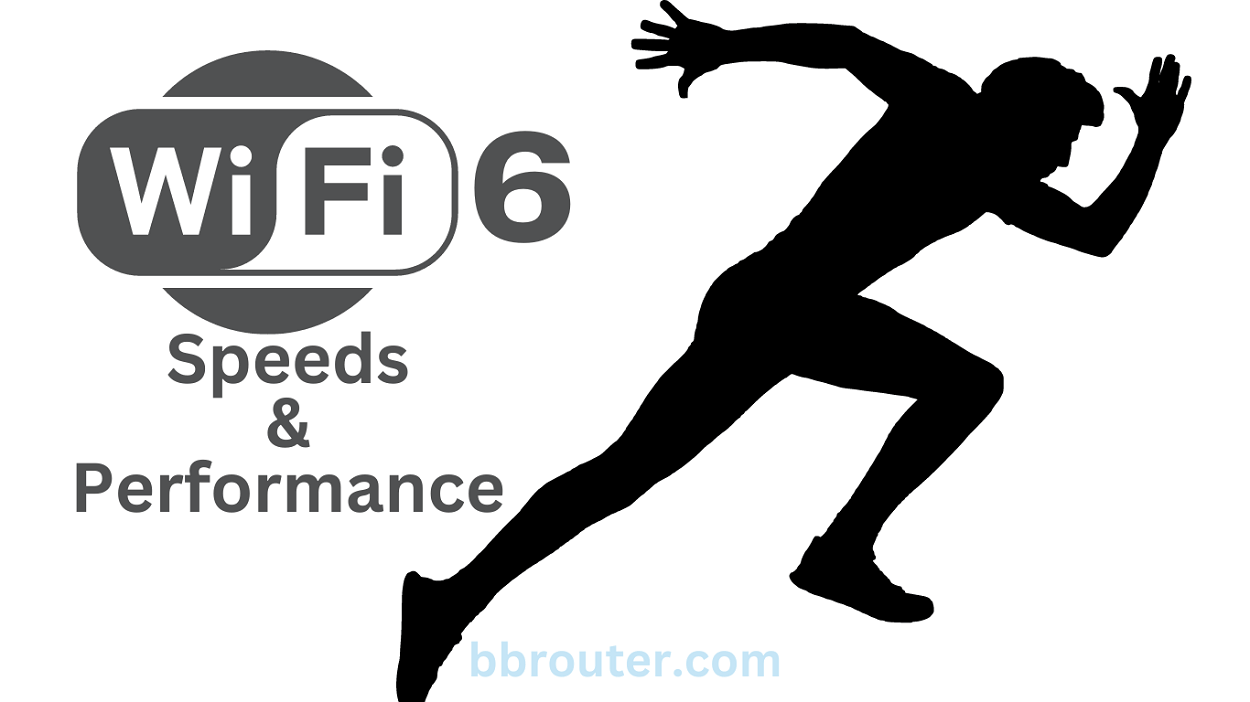- Updated:April 5, 2024
In today’s digital age, a fast and reliable internet connection is essential for staying connected, productive, and entertained. WiFi has become the go-to solution for accessing the internet wirelessly, and the latest WiFi standard, WiFi 6 offers even faster speeds and better performance than its predecessors. But how fast is WiFi 6? And what factors can impact its performance?

In this guide, I’ll explore the ins and outs of WiFi 6 speeds and performance, and provide tips for maximizing its benefits. Whether you’re a gamer, streamer, remote worker, or just a casual internet user, understanding WiFi 6 can help you rev up your connection and enjoy a smoother online experience.
What is WiFi 6?
WiFi 6, also known as 802.11ax, is the latest wireless networking standard that offers faster speeds, better performance, and improved efficiency compared to its predecessors. WiFi 6 operates on both the 2.4GHz and 5GHz frequency bands and uses advanced technologies to support more simultaneous connections and reduce interference.
One of the critical features of WiFi 6 is MU-MIMO (Multi-User Multiple Input Multiple Output) technologies, which allow multiple devices to simultaneously communicate with the router without slowing down the network. This is particularly useful in crowded areas such as apartment buildings or offices where multiple devices are competing for bandwidth.
Another important feature of WiFi 6 is OFDMA (Orthogonal Frequency Division Multiple Access), which divides each WiFi channel into smaller sub-channels, allowing multiple devices to transmit data simultaneously. This results in faster and more efficient data transfer, especially when there are multiple devices connected to the network.
Additionally, WiFi 6 introduces a new modulation scheme called 1024-QAM, which enables devices to transmit more data per packet. This means faster speeds and better performance, even at longer distances.
In summary, WiFi 6 is a major upgrade from previous WiFi standards, offering faster speeds, better performance, and improved efficiency. Its advanced features such as MU-MIMO, OFDMA, and 1024-QAM make it a powerful tool for staying connected in today’s increasingly digital world.
WiFi 6 Speeds and Performance
When it comes to WiFi 6, one of the most exciting features is its speed and performance. WiFi 6 is capable of delivering theoretical maximum speeds of up to 9.6 Gbps, which is three times faster than the previous WiFi 5 standard. However, it’s important to note that these are theoretical maximum speeds and are not necessarily indicative of real-world performance.

In reality, the actual speeds you can achieve with WiFi 6 will depend on several factors, including the number of devices connected to the network, the distance between the device and the router, and the type of internet service you have. That being said, WiFi 6 does offer several improvements over previous WiFi standards that can lead to better real-world performance.
One of the biggest advantages of WiFi 6 is its increased capacity. With its advanced technologies like MU-MIMO and OFDMA, WiFi 6 can support more devices connected to the network without compromising performance. This is particularly useful in households or offices with multiple users or devices connected to the network at the same time.
Another advantage of WiFi 6 is reduced latency. Latency is the delay that occurs when data is transmitted from one device to another, and it can impact the responsiveness of certain applications like online gaming or video conferencing. WiFi 6 reduces latency by using advanced scheduling techniques and better signal management.
Finally, WiFi 6 also offers improved reliability and stability, thanks to its ability to better handle interference from other devices and networks. This means fewer interruptions and dropped connections, which can lead to a more seamless online experience.
Overall, while the theoretical maximum speeds of WiFi 6 are impressive, the real-world performance improvements it offers are even more exciting. Its increased capacity, reduced latency, and improved reliability make WiFi 6 a game-changer for internet users who demand fast and reliable connectivity.
Factors Affecting WiFi 6 Speeds and Performance
While WiFi 6 offers faster speeds and better performance compared to its predecessors, there are several factors that can impact its real-world performance. Here are some of the most important factors to keep in mind:
- Distance: The further away your device is from the router, the weaker the WiFi signal will be. This can lead to slower speeds and weaker performance. To maximize WiFi 6 performance, it’s best to keep your device as close to the router as possible.
- Obstructions: Walls, doors, and other obstacles can also weaken the WiFi signal, leading to slower speeds and weaker performance. Try to position your router in a central location and avoid placing it near large metal objects or other sources of interference.
- Number of Devices: The more devices that are connected to your WiFi network, the more likely it is that your speeds and performance will be impacted. To avoid this, try to limit the number of devices connected to your network or upgrade to a higher-capacity router.
- Internet Service: While WiFi 6 can improve the performance of your wireless network, it’s important to remember that the speed of your internet service is the ultimate bottleneck. If you have slow internet service, you may not be able to take full advantage of the benefits of WiFi 6.
- Router Quality: The quality of your router can also impact WiFi 6 speeds and performance. A high-quality router with advanced features like beamforming and QoS (Quality of Service) can help to optimize your WiFi 6 network.
By keeping these factors in mind and taking steps to optimize your WiFi 6 network, you can enjoy faster speeds and better performance than ever before.
WiFi 6 Applications and Use Cases
WiFi 6 is designed to provide faster speeds, better performance, and improved capacity over its predecessors, making it ideal for a wide range of applications and use cases. Here are some of the most common applications and use cases for WiFi 6:
- High-Performance Gaming: WiFi 6’s increased capacity and reduced latency make it perfect for online gaming, where fast and reliable connectivity is essential.
- Streaming 4K Video: With its faster speeds and improved reliability, WiFi 6 is perfect for streaming high-resolution 4K video content without interruptions or buffering.
- Internet of Things (IoT) Devices: With the proliferation of smart home devices and other IoT devices, WiFi 6’s improved capacity and support for multiple devices make it a great choice for homes and offices with multiple devices connected to the network.
- Virtual and Augmented Reality: Virtual and augmented reality applications require fast and reliable connectivity to function properly. WiFi 6’s improved capacity and reduced latency make it ideal for these applications.
- Remote Work and Telecommuting: With more people working from home than ever before, WiFi 6’s improved capacity and reliability can help ensure that remote workers have fast and reliable connectivity for video conferencing, file sharing, and other essential work tasks.
- Large Public Venues: WiFi 6’s improved capacity and support for multiple devices make it ideal for large public venues like stadiums and convention centers, where hundreds or thousands of users may be connected to the network simultaneously.
Overall, WiFi 6 is an excellent choice for anyone who demands fast and reliable connectivity for their applications and uses cases. With its improved capacity, reduced latency, and better reliability, WiFi 6 is set to become the new standard for wireless connectivity.
Read router review articles.
More Info
WiFi 6 is the latest generation of WiFi technology, offering faster speeds, better performance, and improved capacity compared to its predecessors. By taking advantage of features like MU-MIMO, OFDMA, and BSS Coloring, WiFi 6 can deliver up to four times the speed of WiFi 5, making it ideal for a wide range of applications and use cases.
While WiFi 6 offers many benefits, it’s important to keep in mind that real-world performance can be impacted by factors like distance, obstructions, and the number of devices connected to the network. By optimizing your WiFi 6 network and taking steps to minimize interference and other issues, you can enjoy faster speeds and better performance than ever before.
Overall, WiFi 6 represents a major step forward in wireless connectivity, providing faster speeds, better performance, and improved capacity for a wide range of applications and use cases. Whether you’re streaming video, gaming, or working from home, WiFi 6 is sure to provide the fast and reliable connectivity you need to get the job done.
